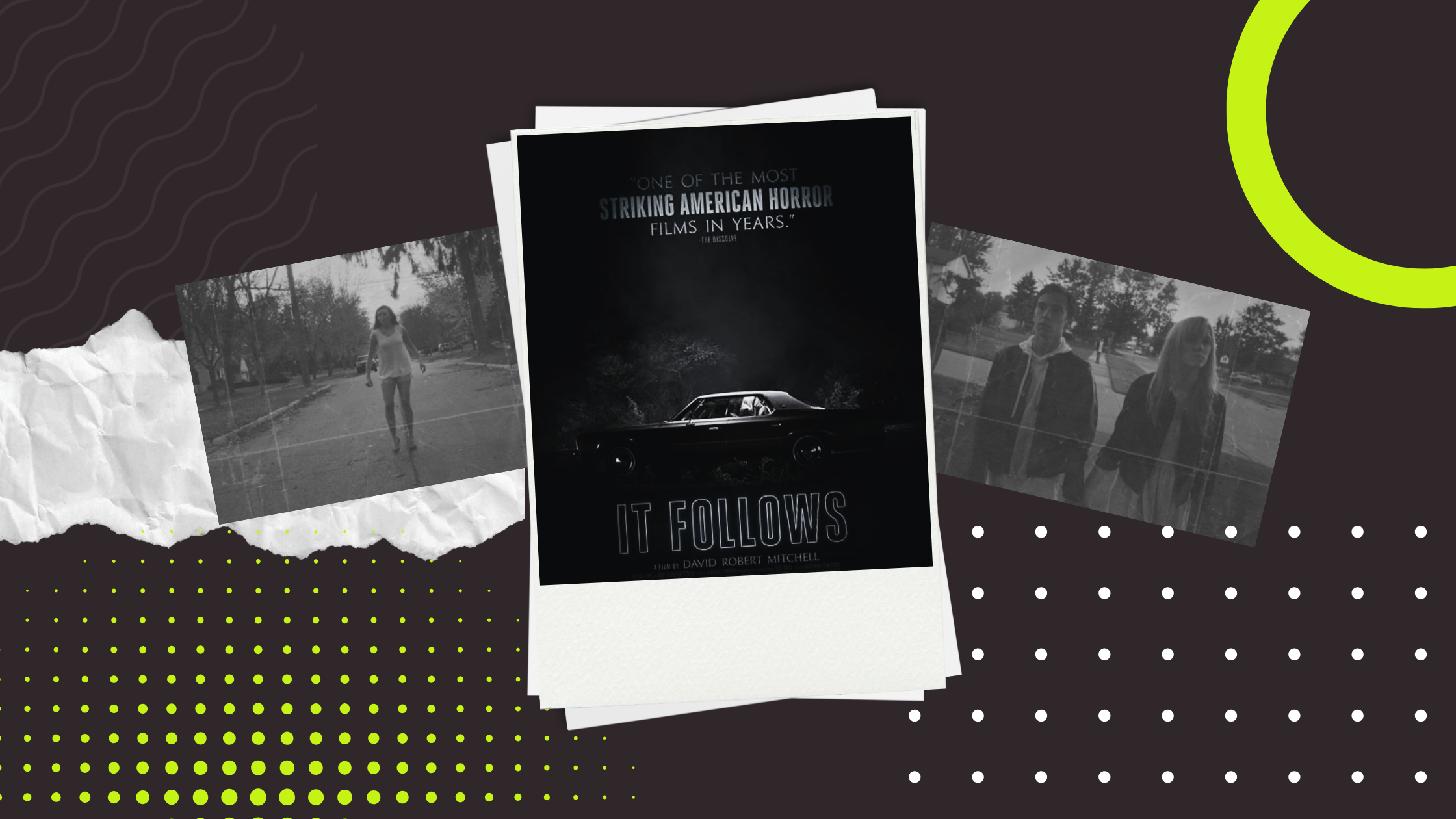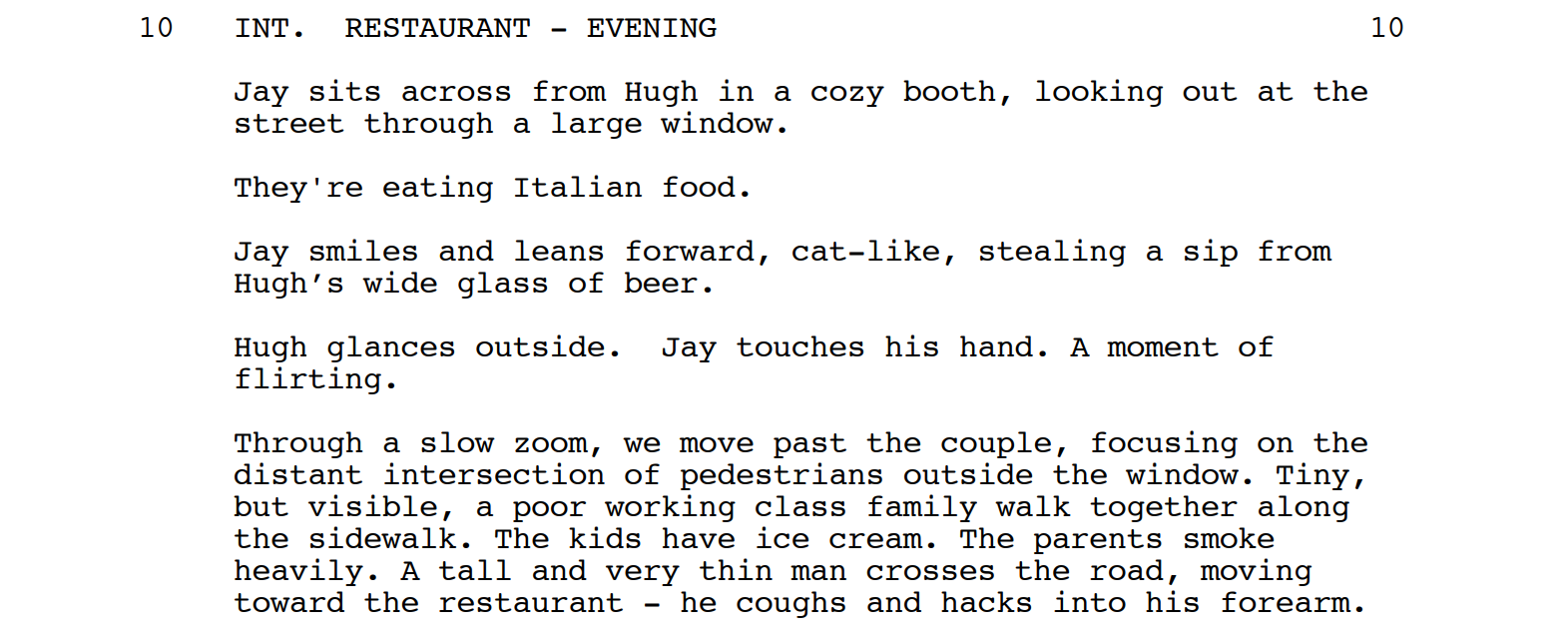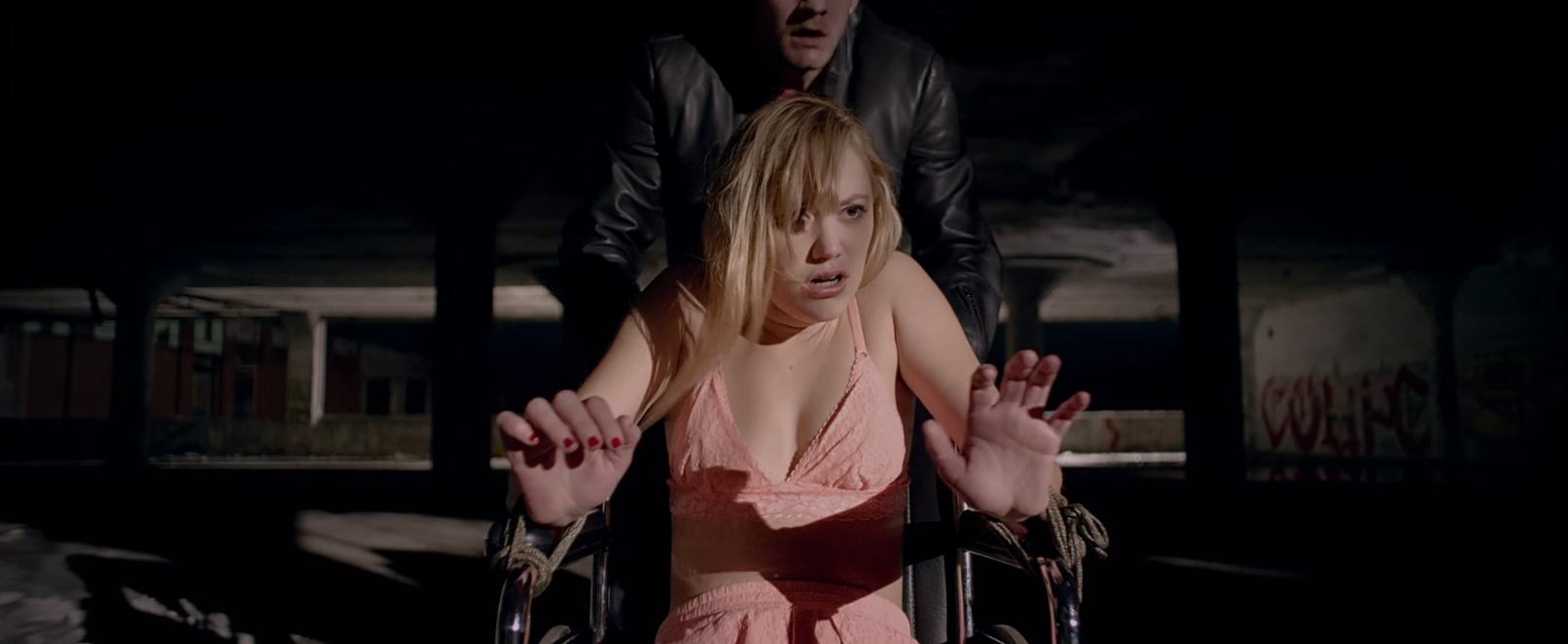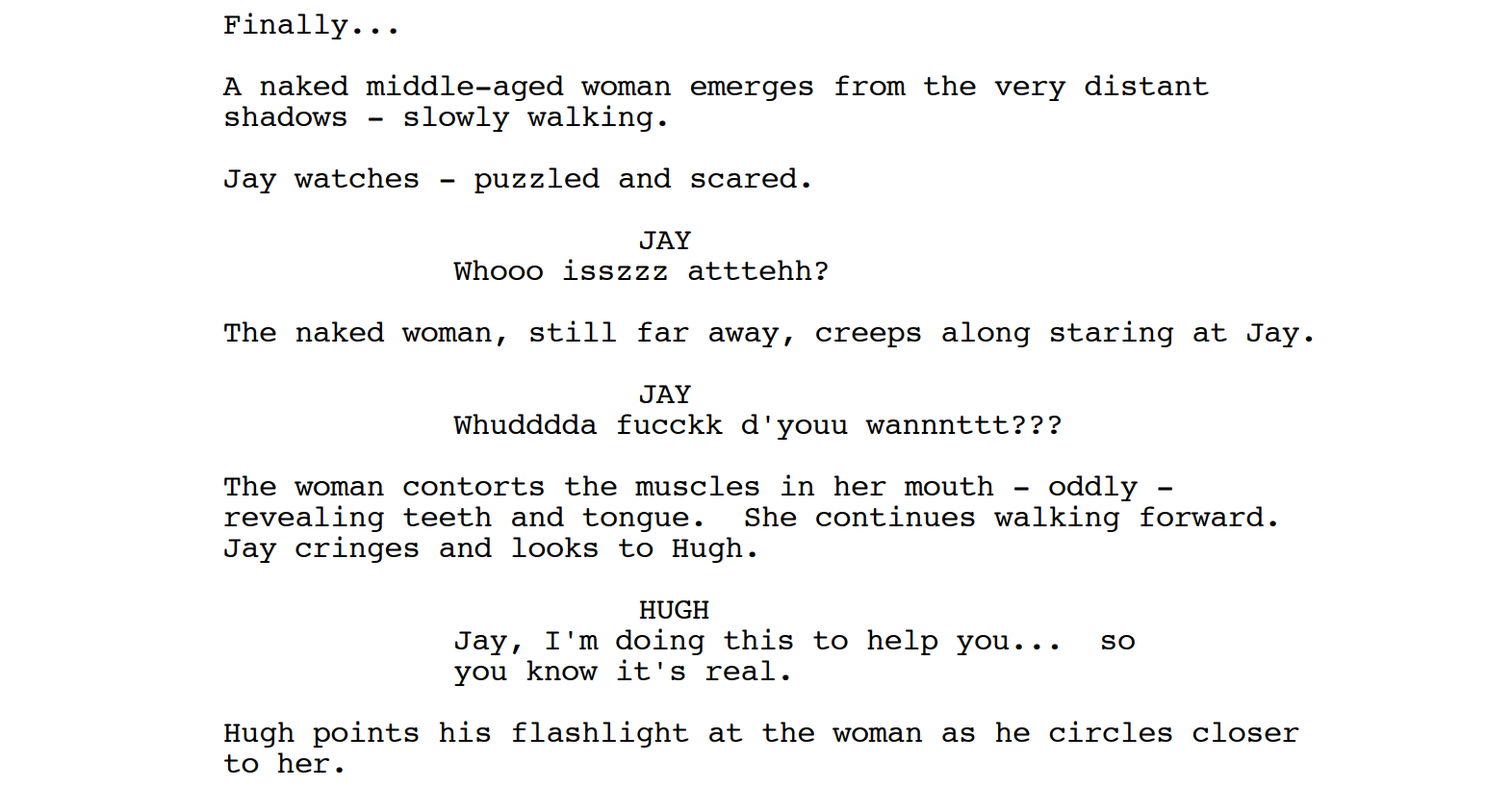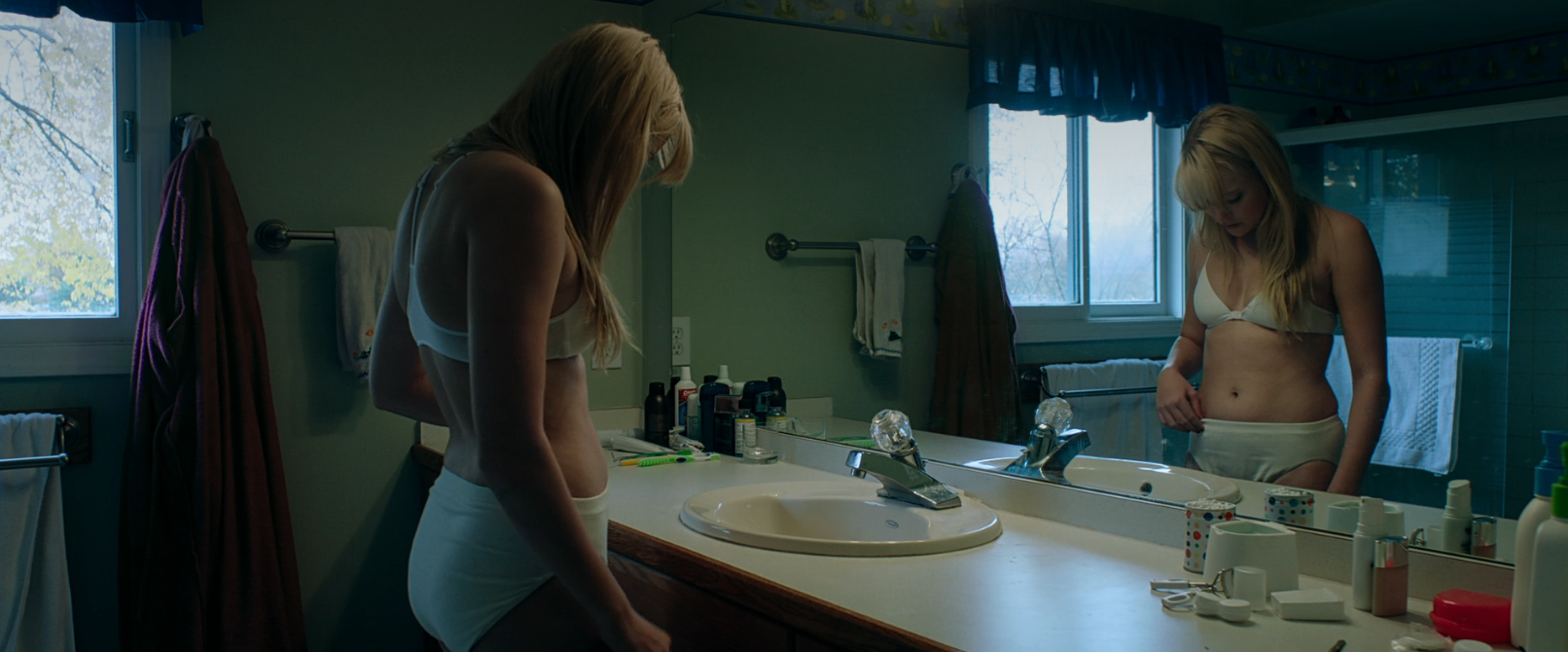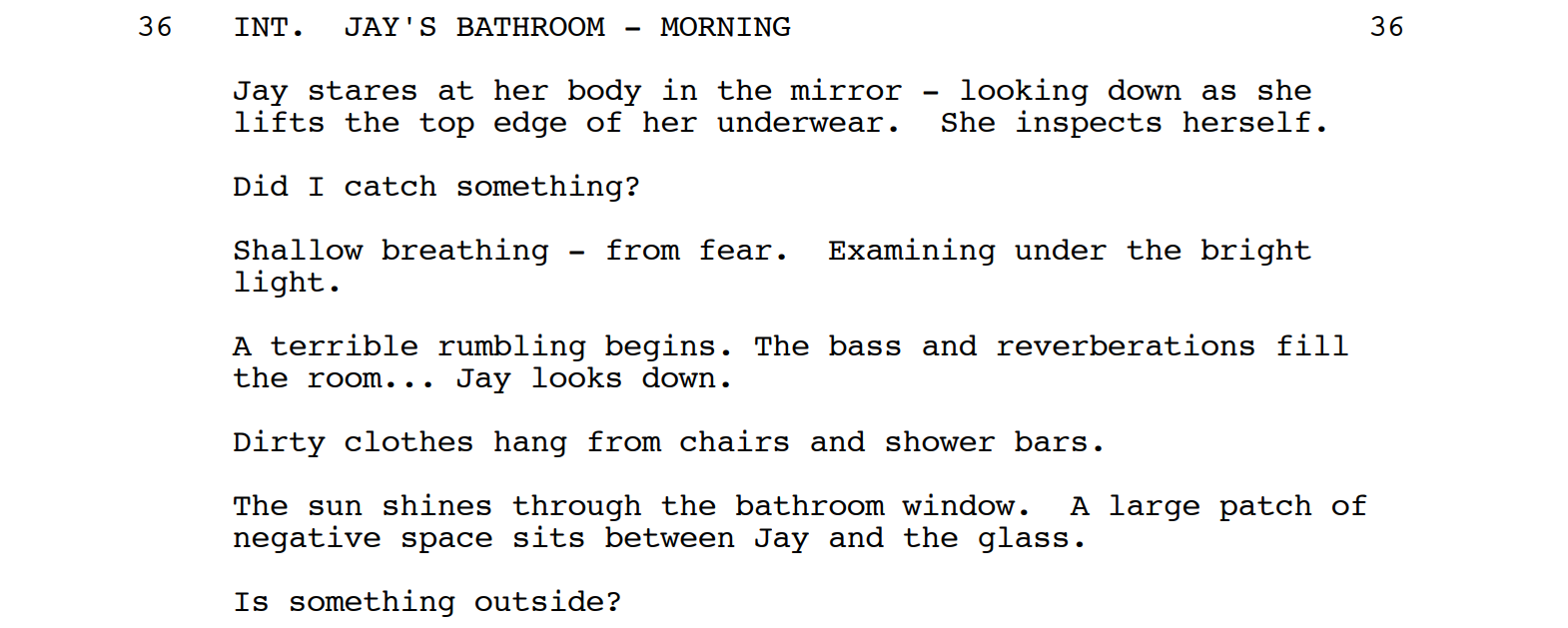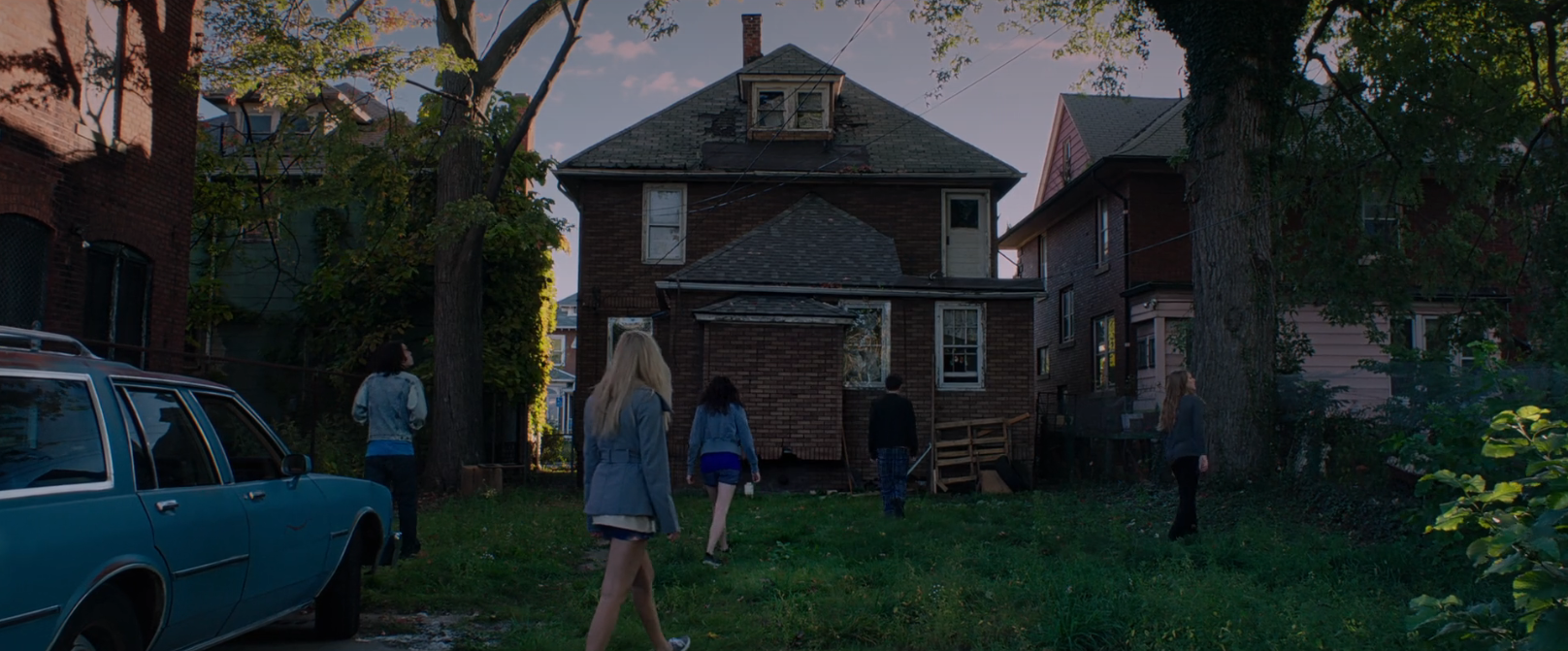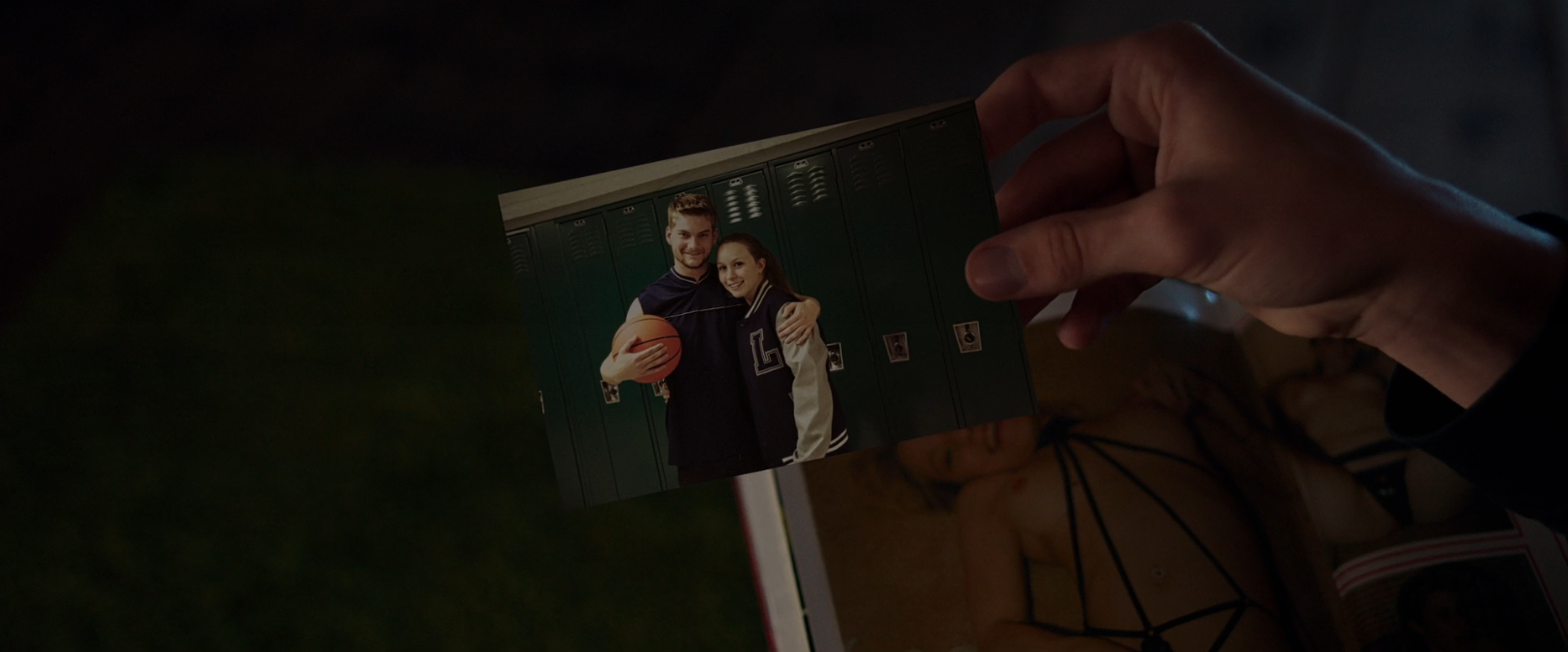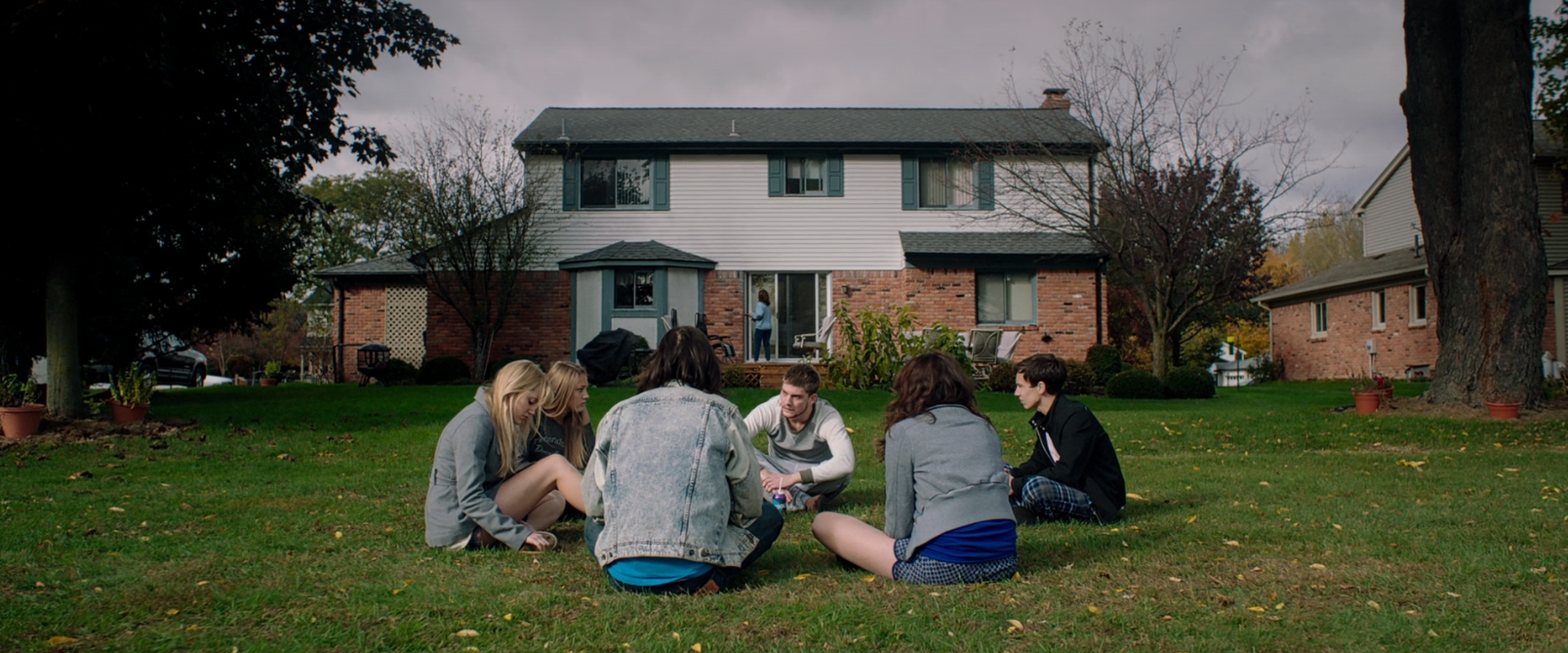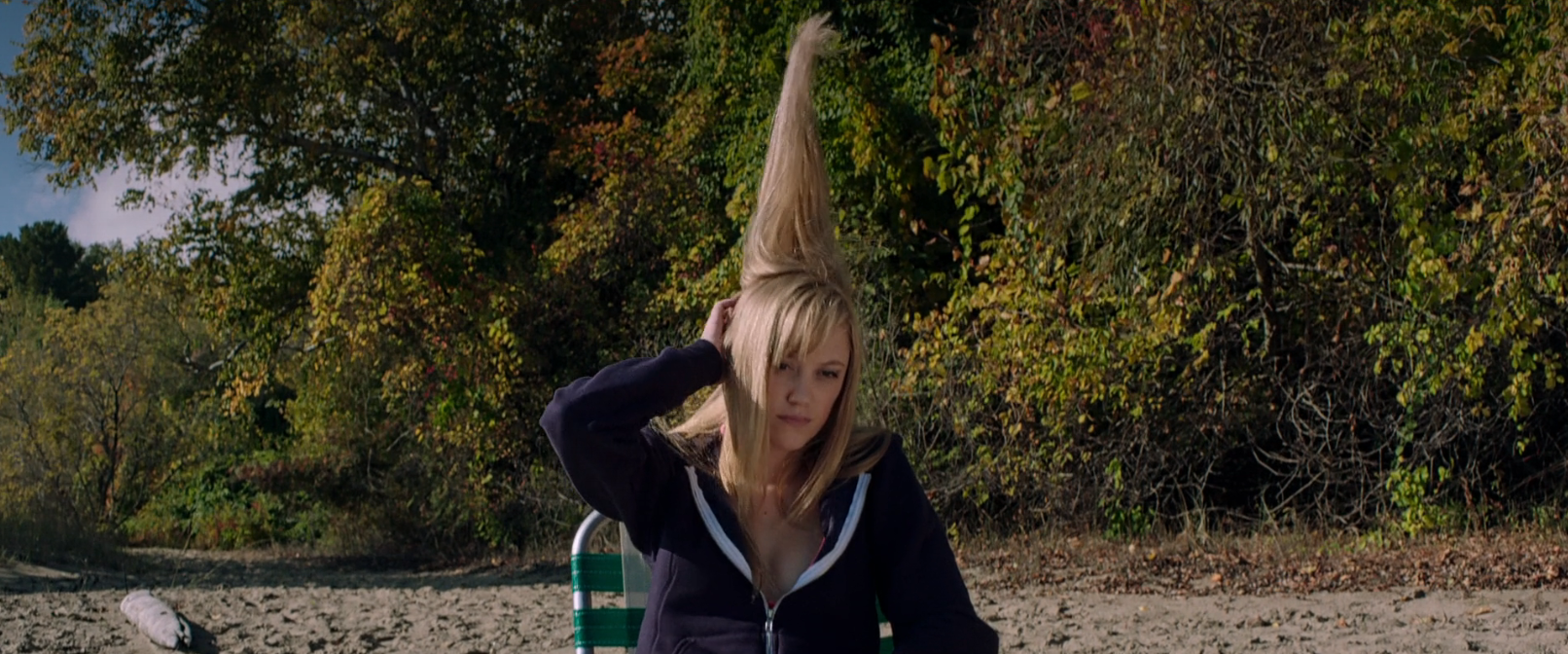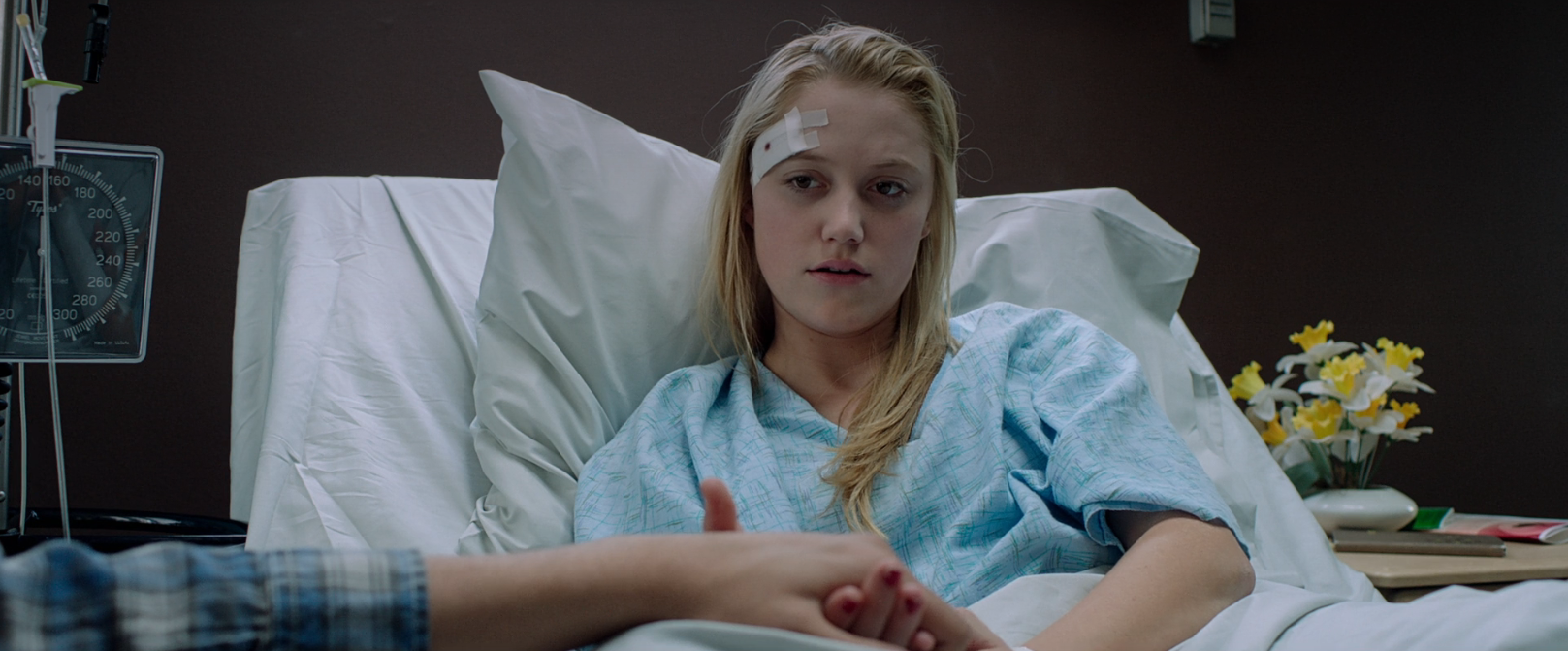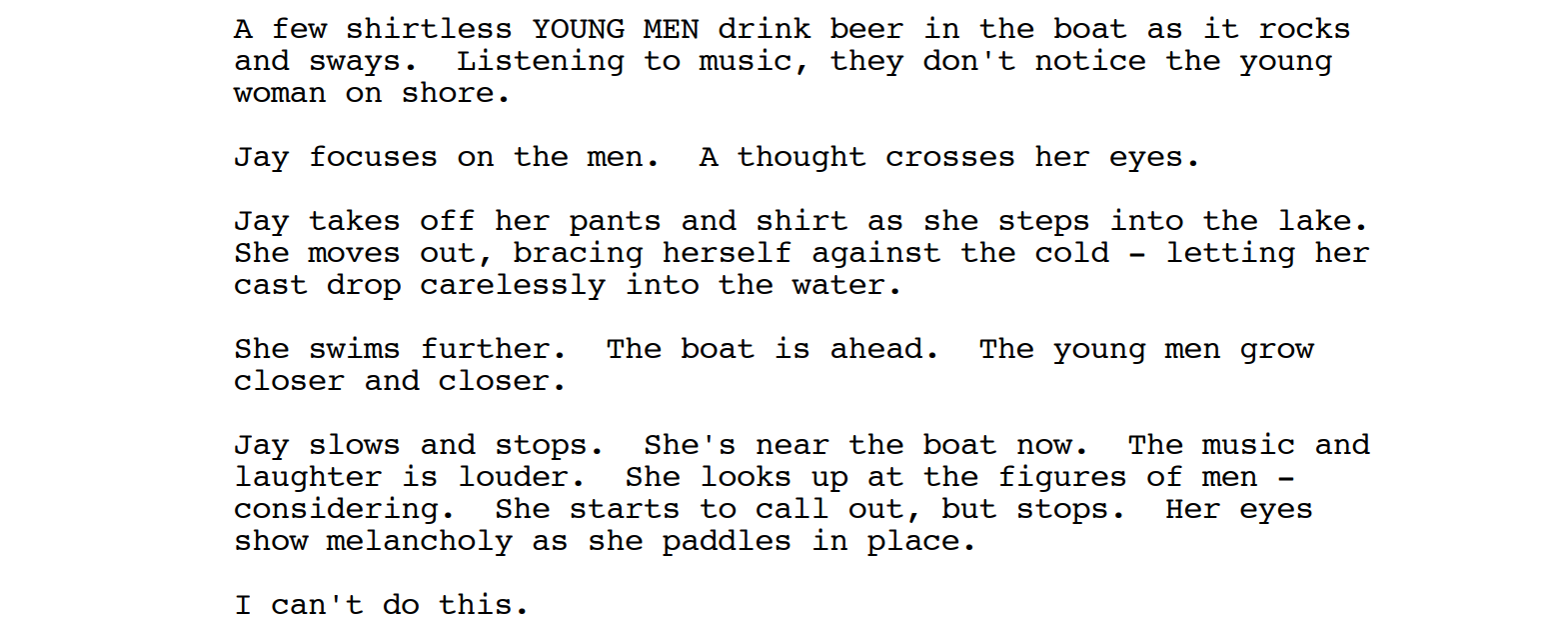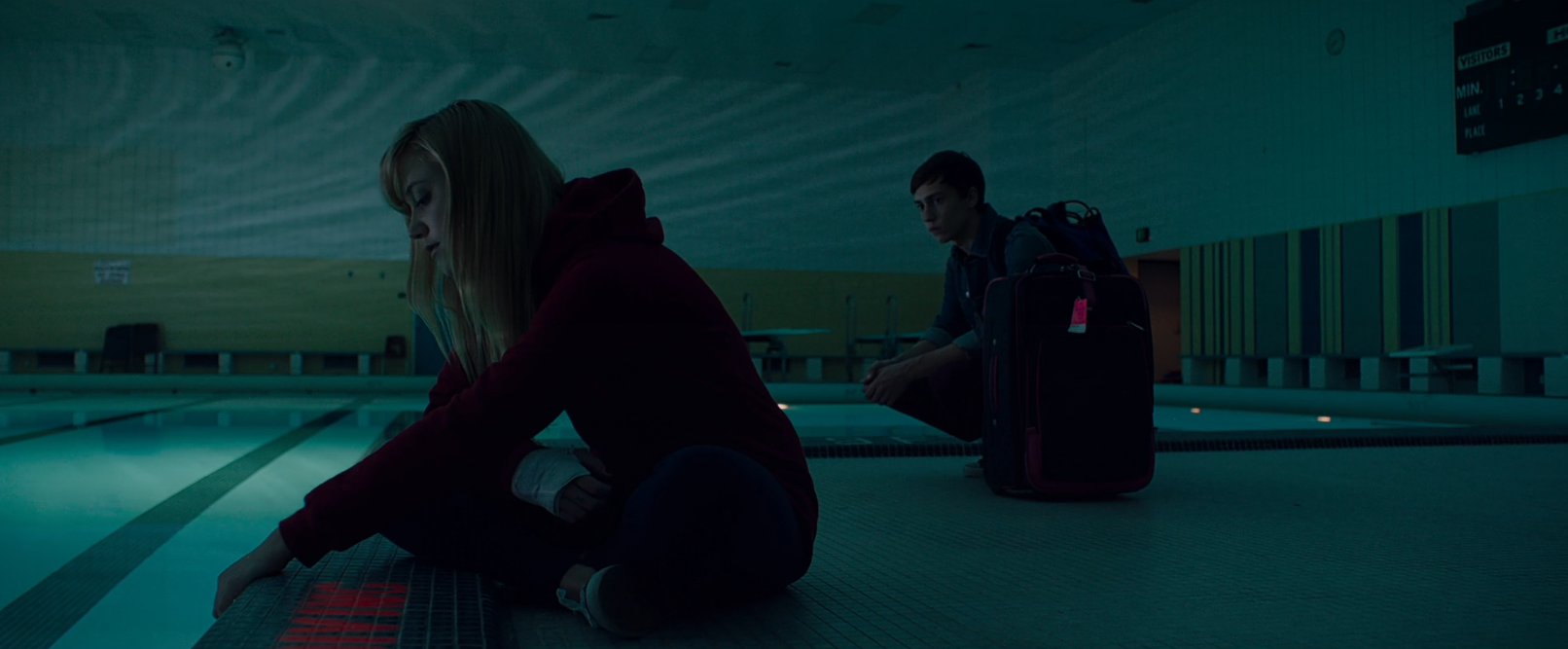It Follows – How to Build Suspense… and How to Ruin It
It’s Halloween season, and you know what that means: horror time at Kinolime!
Suspense is a fragile art that thrives on anticipation, uncertainty, and the uneasy gap between what we know and what we dread. It Follows, David Robert Mitchell’s 2014 horror cult classic, shows how a simple premise – an unstoppable presence stalking its prey – can transform into nerve-shredding tension, the likes we have rarely seen since The Terminator.
Yet, suspense is a form of trust. One misplaced scare, overexplained detail, or jarring tonal shift can shatter it. Break that trust, and you’re back at square one, rebuilding from the ground up.
This article looks at how It Follows sustains its uncanny tension – and how even the smallest slip can unravel the unease that keeps audiences hooked.
OPENING IMAGE
The film opens with ANNIE, sprinting through her quiet suburban street, fleeing from an invisible threat. What she sees, no one else can. She escapes to a lakeside where she calls her father. She’s apologetic, pushed beyond fear and into a stage of grim acceptance. Something is coming to get her.
We smash cut to daylight and Annie’s mangled body. Whatever hunted her caught up. Mitchell has established a strong level of suspense – we’re provided an answer before we know what question we should be asking.
SET UP
Next we meet JAY, a thoughtful 19-year-old living at home with her younger sister KELLY and their mostly absent mom. Kelly’s friends, YARA and PAUL, linger around – Paul nursing a crush on Jay. But Jay’s attention is elsewhere: she’s heading out with HUGH, an older date.
Jay and Hugh wait in line for a movie. Hugh muses how enviable it is to have a whole life ahead; a foreboding hint at his own fears of survival. When he gestures toward a woman only he can see, panic strikes. He fakes illness and bolts from the theater.
We’re economically establishing that certain people can see figures that nobody else can… figures that follow you, and if they get hold of you, brutally kill you.
After university classes, Jay hangs out with Kelly, who probes about her love life. Jay admits she hasn’t slept with Hugh yet – she’s eager, though he’s reluctant. A moment only present in the script sees Hugh initially reject Jay’s advances, strengthening his characterization by suggesting he’s wrestling with his conscience.
Jay’s life carries a wistful haze, like a half-remembered summer in a faded photograph, tinged with ennui. With her friends away at university, she feels forgotten, almost regressing to Kelly’s age. We get the sense that this calm is about to be broken.
INCITING INCIDENT
On a later date, Jay and Hugh drink beers and skinny-dip in a lake. After moving things to Hugh’s car to consummate their relationship, Jay grows reflective, ignorant to the way Hugh nervously scans their surroundings.
As Jay ruminates, Hugh approaches from behind. The sense of unease peaks when he drugs her. But why? This isn’t sexual assault. Jay has already consented. This isn’t a robbery. She possesses nothing valuable to speak of.
Once again, we’re provided an outcome without context, prompting us to work backwards.
DEBATE
Jay wakes up bound to a wheelchair in an abandoned building. Hugh is apologetic but on edge, expecting someone else to show up. He explains he’s passed something to her; not a disease, but a curse.
Jay is understandably scared and confused in equal measure. Hugh does not approach this from a place of ill intent; he gives Jay instructions on how to pass the curse on to someone else.
Still drugged and growing hysterical, Jay waits for ‘It’ to approach. Appearing as a naked woman, Hugh only wheels her to safety once it has come close enough to traumatize Jay.
Hugh leaves a drugged, half-naked Jay outside her home, drawing the attention of neighbors including GREG. The police arrive, taking statements and managing bystanders. They doubt Jay’s claim that their encounter was consensual, but they’re otherwise baffled.
BREAK INTO TWO
Life edges back toward normal, or as normal as it can be after such a bizarre ordeal. In a chat between Jay’s mom and Greg’s mom (MRS. HANNIGAN), we learn Jay didn’t catch any diseases – but ‘Hugh’ has vanished. Fake name, fake address. His actions were deliberate and premeditated.
As Act Two begins, a storm approaches – but the what and the why remains unclear. Jay knows even less than we do, which is practically nothing.That’s the brilliance: too many questions to count and zero answers, leaving only a lingering unease. Only dread, untethered by a corporeal form, immune to rationale.
FUN AND GAMES
We get a stretch of near-empty space – Indian summer, landscapes without characters, liminal zones between moments. Time feels paused. We’re provided snapshots of neighborhood children playing, contributing to the thematic throughlines of leaving childhood behind. Jay is alone, withdrawn, fearful. Knowing that something is wrong, that something is coming.
Mitchell’s script offers a rare screenwriting technique: first-person internal thought. Usually considered an ‘unfilmable’, it proves powerful here – distilling story and dictating performance into straightforward introspection. It aids us in feeling like we’re in Jay’s shoes.
As Jay returns to school, every single person ambling down the street or across campus becomes a potential threat. From her classroom window, Jay spots a woman in pajamas. Out of place. Unsettling.
She bolts from class, hoping it’s just paranoia – but when it’s clear no one else sees her pursuer, Jay runs like hell.
Jay heads to the zoo, where Paul and Kelly work at a concession stand (an ice cream shop in the film). In order to explain and validate her concerns, she has to tell them about Hugh’s warning. It sounds ludicrous, and there’s a shift in dynamic here, whereby Kelly almost inherits the role of protective older sister.
Paul promises to stay up all night to protect Jay, though it feels more like an excuse to be near her. Upstairs, Jay is spooked by a recurring peeping Tom neighborhood kid. Once creepy but harmless, now a possible menace.
Unable to sleep, Jay hangs out with Paul, reminiscing about their friendship before they drifted apart. Their sweet trip down memory lane is shattered by a window breaking. Paul insists the coast is clear, but the audience knows he can’t see the threat. Jay can: a figure has climbed through the window and into the house!
Jay bolts upstairs and locks herself in her room. Her friends plead to be let in, dismissing her claims of an intruder. They can’t see it, so it can’t exist. But we still don’t know this monster’s rules – can it speak, or even pose as someone Jay loves to reach her?
Jay bolts from the house, grabs a bike, and pedals like mad. She ends up at a park, sitting on a swing, scanning every direction. Tensing as Paul nears, she relaxes when she sees he’s with Yara, Kelly, and a newcomer – neighbor Greg. When Jay is adamant she won’t go home, the group shifts into the offensive for the first time – they need to seek out Hugh for clarification, and maybe a way to undo this curse.
Approaching the midpoint, it’s unclear how much the group actually believes Jay. They’ve only witnessed her reactions – no tangible evidence beyond a broken window. It’s a bit convenient that Greg accepts her story so quickly. Sure, they want to help, but how fully do they trust her account? This could do with a little clarification.
MIDPOINT
The group moves through Detroit, Jay hyper-aware that anyone they pass could be the monster. Hugh’s former house is abandoned but rigged with guerrilla alarms.
They uncover a smoking gun – a clue that could reveal Hugh’s true identity.
In a few short pages, the group is making fast progress.
BAD TO WORSE
Throughout many scenes in Act 2B, Mitchell fills the background with people moving toward Jay. Innocent or not, it’s unclear. It heightens suspense. We notice details the heroes miss while distracted by minor concerns.
Hugh – real name Jeff, revealed during a quick Lawson High visit – is easy to track down, but the encounter is anticlimactic. He lives at home with his mother and pleads his apologies. This scene confirms that Jeff has been self-harming to combat his guilt. Greg enjoys throwing his weight around, acting as Jay’s ‘protector’.
Jeff adds to the monster’s legend, telling Jay to sleep with someone else to ‘pass it on.’ He warns that once the monster kills its target, it turns to the previous link in the chain. If Jay dies, Jeff is next, all the way up the line to ‘whoever the hell started it.’
During this conversation, as Greg voices his doubts for the first time, a girl in soccer gear slowly approaches. This exact moment is where the script makes its first major misstep; it turns the pursuit into a joke.
As I noted earlier, once suspense breaks, it’s tough to rebuild. By turning it into a joke, the film resets the tension almost from scratch. This stretch should mark a “Bad to Worse” phase for the characters… it’s not an instruction on how to handle the suspense we’ve just spent an hour constructing. But that’s exactly what is about to happen.
Taking Jeff’s advice (letting him off scot-free, it seems), the group heads for Greg’s family lake house. En route, Kelly encourages Jay to pass the curse on – though Jay is still traumatized and understandably unprepared to sleep with anyone.
After days at the lake house, life slips into a frustrating normalcy. Attention shifts to Paul’s pining for Jay, exacerbated by her budding connection with Greg, who can relate to her on a more personal level.
They practice firing a handgun, strangely at ease. Jay even says, “I feel safe out here.” Girl, why? The threat suddenly feels predictable and combatable. Seeing them let their guard down, despite the horrific scares Jay has recently endured, feels like a writing shortcut.
Paul’s advances are rejected by Jay. This is another misstep, Paul becomes the butt of a joke and Jay smirks. She’s let her guard down so much that she can laugh in a time like this – only serving to diminish the threat of the monster.
The group relaxes on the lakeside. As Jay reclines, a figure approaches from behind, unseen by everyone else. And this is where immersion is really, irreparably broken. The monster, within touching distance, lifts Jay’s hair.
That’s it. That’s all it does. The same menace that folded Annie sideways, now… tugs Jay’s hair. The group spots the invisible figure and fights it off, giving Jay time to run. It appears as Yara – potentially chilling if utilized to trick Jay or unsettle the others. But it’s neither. Arbitrary.
Now we see the monster is sluggish, clumsy, and stoppable with blunt force – it’s no longer terrifying. Instead of a relentless dread, it’s reduced to something slow, dumb, and fightable.
Jay shoots it with Greg’s gun, knocking it down and drawing blood, but it gets back up unfazed. This feels like too little, too late, and Mitchell knows it – delivering a few jump scares to try and build us back up again.
BREAK INTO THREE
Jay escapes the monster, who now appears as Annie. She drives off alone, reverting to the isolated, wary figure from the start of 2A. She abandons her greatest asset in surviving this onslaught – her friends. This is maddening because she wouldn’t have survived the last attack if not for their aid. This is a plot based decision rather than a character driven one, necessary in order for her to have a car accident.
FINALE
Into Act 3, Jay should have a clear strategy developed through experiences: travel far away, wait a few days, then return whence she came – ping-ponging the monster’s pursuit. In the hospital, the smart move for the writer would be to temporarily prevent Jay from accomplishing this. A broken leg, heavy sedation, awaiting a transfusion – something that grounds her. Instead, she’s given only a broken forearm, which doesn’t inhibit her at all.
Confident she’s safe for now (they’re far from the lake house) Jay does the second-most logical thing: passes the curse to Greg. Jeff had told her to do this in Acts 1 and 2B, making it one of those the answer was in front of you all along moments, which isn’t satisfying. Greg doesn’t fully buy into the curse (he missed the lake attack), so it feels a little opportunistic, even exploitative, for Jay to transmit it – not to mention the logistical issue of their houses being in such close proximity. By the time it’s gotten to Greg, it’ll be prime to get her too.
Paul grows jealous of Jay and Greg’s closeness, deducing their bond has deepened. But three days pass with Greg unharmed, casting doubt on Jay’s claims.
At home, Jay finds the neighbor boy breaking into her room, rifling through her underwear. Another jump scare. This one at least has some weight to it.
Greg still hasn’t seen anything strange, prompting Paul and Kelly to defend Jay’s integrity. That night, she watches from her window as Greg walks down the street and breaks into his own house. The script works – but his cartoonish gait in the final cut further undercuts the tension, and always unintentionally makes me laugh.
Jay pursues the monster into Greg’s house, where it now appears as Mrs. Hannigan – hinting at evolving adaptability, capable of blending in Confusingly, it kills Greg quickly, violently, and lewdly, further implying that Jay is protected by plot armour.
Jay gets the hell out of there, drives to a secluded woodland, where she sleeps through the night. This is explicitly Lake St. Claire – the very location Annie died. She’s once again the monster’s primary target. By morning, she considers passing the curse to strangers but ultimately backs out.
Back home, Jay rejects Paul’s advances again. He devises a plan, and the group heads to the local pool – another location from their shared childhoods. They rig it with household electronics, intending to use Jay as bait and electrocute the monster when it arrives.
When it appears, the figure remains invisible to us, like everyone else. This heightens the chaos of the finale. Jay won’t describe it to Kelly – so who is it posing as? The monster spots a trap though; it hurls the electronics at Jay in the pool. Their ploy ruined, they resort to plan B.
Shot point-blank, the monster seems dead – until it grabs Jay, trapping her underwater. Another shot finally connects, and she watches the blood-filled water as it appears truly defeated.
A time jump. Things seem to have settled. Jay sleeps with Paul – offering us the questionable message that persistence prevails. Not sure about that one, David. The film tones down screenplay Paul’s creepiness somewhat, and the script also emphasizes that Jay actually does develop feelings for Paul – while the film gives more of a ‘mission accomplished’ sort of take on this transfer. We also glimpse the girls’ father in a framed photo – the form the monster took at the pool, likely to provoke an emotional response.
Paul considers sleeping with prostitutes as a precaution – which really hammers home the desensitization and complete lack of intimacy the script treats sex with; Paul is the final victim as the only character who really feels anything the entire narrative.
CLOSING IMAGE
The film closes on a calm autumn afternoon. Rather than foreboding, the neighborhood feels peaceful. As the new couple strolls hand in hand, a figure appears behind them – harmless or sinister? A classic sting John Carpenter would be proud of.
CONCLUSION
Did Mitchell leave the door open for a sequel here? It seems that way, as a follow up (pun intended) is due to start shooting in late 2025, titled They Follow. Likely to release a dozen years after the original, we know that this will be a sequel rather than a prequel / origin story for the monster – as Maika Monroe is set to return as Jay.
Regardless of how the sequel expands on the original, I implore both Mitchell (and all you writers at home) to consider how best to maintain suspense. The key ingredient to building suspense is patience, it’s a beautiful unknown quantity which builds naturally in the minds and blind spots of the audience. You do not need to write suspense, you can withhold information and allow it to spread, like mold in a damp, dark space. But you can shatter it, quite easily, with moments of levity, by assuaging concerns before they take root, and by trying too hard to propel the plot. In a sequel, I do not want to see characters downplaying the threats they face.
The story is strong and marked a new normal in how studios conceive their monsters. In a zombie movie, we know the rules. In a vampire movie, we know the rules. In It Follows, we’re as clueless and naive as the characters. Stripping away a lot of horror convention, the obvious allegory for sexually transmitted diseases feels modern and uncomfortable. The decision to excise the story of competent adults lends a feeling of helplessness to the cast.
The treatment of sex as something foreboding, even monstrous, is a fascinating take – clearly broadcasted by the sterile functionality of the act throughout. It’s frightening, it will change you, it will haunt you. Even referencing the monster as ‘It’ is an allegory to how young people discuss intimacy – have you done it with him yet? The entire story is all about wanting to become an adult while also wanting to remain a child. Hugh states he wishes he could be a child again. Jay runs from the monster to a playground. The monster takes the form of Jay’s presumably dead / absent father. The script is littered with fondly remembered locations; the pool, the lakehouse, the zoo.
There are a few aspects of the screenplay which are stronger than the final film – Hugh, Paul, and Kelly all have a little more depth and development – but the film elevates the screenplay through many of the benefits of the medium. The cinematography, performances, soundtrack, locations, and design are all incredibly strong.
Horror in general is a difficult genre to assess ‘correctly’, but I feel that this is a decent-to-strong screenplay that falls into several pitfalls preventing it from reaching its full potential.
We award It Follows a 3.5/5.

